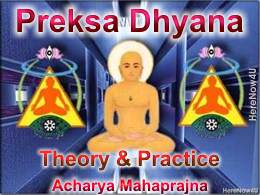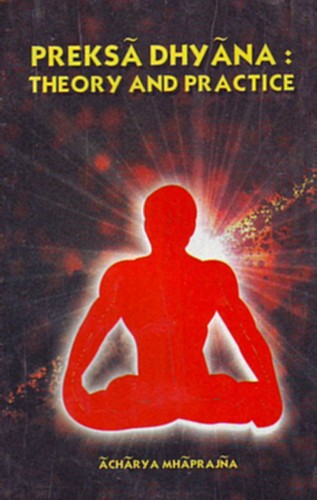[raison d'etre = reason or justification for existence]

Perception of the body is the means of self-awareness. One who hasn't mastered the technique of perception can never achieve self-awareness. Perception of the body is a technique: it is a system. And until one learns the technique, one can see the skin, the colour, the form, the limbs, the face, but none of these can be called perception of the body. To do this, one must first understand the system and learn the technique - focus attention on each part of the body in turn, starting from the outermost surface, penetrate deep inside and concentrate.
In the body, various systems are functioning continually. The heart beats, the blood circulates, oxygen fills the lungs and is carried inside by the haemoglobin in the blood; all organs are active; the whole organism throbs with activity. The machinery of the organism works incessantly like a colossal factory. Every minute, innumerable phenomena occur, thousands of chemical reactions take place, millions of old red blood cells are destroyed and new ones are created, but one is completely unaware of all these. He is blissfully ignorant of what goes on inside his body. The reason of unawareness is that most of the functions are automatic, i.e., do not involve the conscious mind. Only a deliberate concentration of internal perception can give an idea of the colossal activity within. And there is a high degree of automation, which filters out most of the sensations from being perceived. The instrument of perception has thus been blunted and is unable to detect subtle sensations. A process of de-automation by a deliberate concentration and focusing of the attention can sharpen this instrument to some extent to enable it to get an idea of the colossal activity inside. Be aware of the tremendous activities of various organs such as subtle movements inside due to flow of the vital energy; chemical reaction due to metabolic functions; electrical impulses being transmitted from nerve to nerve; with every movement various body mechanisms have to react to the continual changes in the external environment - heat and cold, humidity and dryness - a dynamic equilibrium is maintained by continual adjustments of body fluids; food materials are torn down into simpler units or oxidised to release the energy; bio-chemical and bio-electrical phenomena take place continually. All these are to be perceived and be aware of, before one thinks of the subtlest element - the soul.
The soul is inside the body but before one can reach this most subtle truth, one has to open umpteen windows and unlock umpteen doors. When everything else is perceived and laid threadbare, one can hope to realise the soul. The soul is at the centre, surrounded by impenetrable envelopes of subtle body material. Unless and until these envelopes are torn open, one cannot come face to face with one's real self. The process is long and arduous. One has to develop the ability to perceive more and more subtle phenomena, step by step.
Our tour of self-awareness, tour to realise the pure innermost self commences with perception of breath. The second step is perception of body. A doctor has to examine a patient's body from within to diagnose the disease. He will measure the temperature feel the pulse, examine the chest, listen to the heart-beats, probe the abdomen, have a look at the tongue and the throat. If the clinical examination fails to tell him what is wrong, he may order an X-ray or pathological tests. He may take help of delicate instruments and probe carefully inside. He does all these to know the state of the internal organs and thereby infer where and what is amiss. The intense search for the symptoms of the disease finally succeeds in revealing the dysfunction of an organ or a system and in diagnosing the cause of illness. No doctor can diagnose a disease without proper examination with or without the help of instruments. One must probe deep to get at the root of the trouble. Perceptual meditation (preksa dhyana) also probes deep to perceive the subtle. It is concentration of perception.
Perception is a process of great significance. Its importance can be realised only when one's attention is totally concentrated, focused and riveted to the object. Perception of the body means perception of the internal functions. It is the process of looking wholly inwards abandoning the outside or external objects. Hundreds of thousands of sensory messages are received by the brain every second from all over the body. The raw sensations are converted into perception by the conscious mind. Thus to perceive is to know, to be aware of one's own existence. A high level of self-awareness leads to high level of consciousness.
It is obvious that the process of the body-perception is that of looking inwards. Conscious activity, normally, engages itself with the external environment. The body is the tool for reversing the direction of the conscious activity from outward to inward. The technique enjoins one first to be aware of the outermost layers of the body, and then move inwards, i.e., the process is centripetal - towards the centre. Once the conscious mind is withdrawn from the exterior surrounding and turns inwards, it is comparatively free from the emotions of like and dislike and is therefore calm. Such a state of mind can reach cellular levels within the body. Cellular organisation is benefited by direct communication with the conscious mind. When the attention is wandering externally, cellular organisation functions subconsciously, without the benefit of the psychical supervision. With the supervision of the conscious mind, the cells function more efficiently. Regular practice of perceptionof body by well-trained mind changes cellular consciousness and a high degree of self-awareness is achieved. Acharya Mahaprajna
Acharya Mahaprajna

